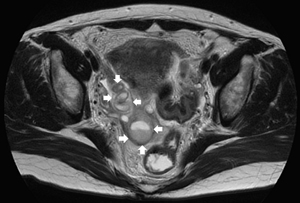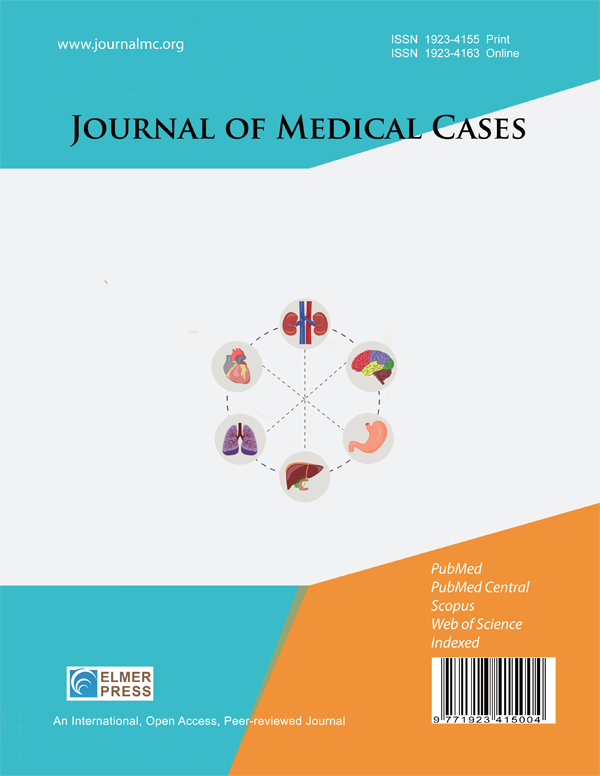Peritonitis After Endometrial Cytology in a Woman With Hydrosalpinx Caused by Chronic Chlamydia trachomatis Infection
DOI:
https://doi.org/10.14740/jmc4344Keywords:
Chlamydia trachomatis, Peritonitis, Nucleic acid, Amplification, Serum chlamydia antibody, HydrosalpinxAbstract
Some women infected with Chlamydia trachomatis (CT) are asymptomatic, while others experience lower abdominal discomfort when the inflammatory process extends to the fallopian tubes. Without treatment, salpingitis can progress to pelvic peritonitis and subsequently, peritonitis in the upper abdomen, a condition known as Fitz-Hugh-Curtis syndrome, in some cases. A nucleic acid amplification assay is required for diagnosing CT infection. However, this assay may yield a negative result even in the presence of CT infection. This report presents a case of a 45-year-old woman with a history of hydrosalpinx and no history of lower abdominal pain who underwent endometrial cytology at a local gynecology clinic because of irregular bleeding. The following day, she developed peritonitis. A nucleic acid amplification assay for CT yielded a negative result at the onset of peritonitis. Hence, the patient received tazobactam/piperacillin as a treatment option. However, this drug was ineffective. Subsequently, the patient was found to be positive for serum CT IgG and IgA antibodies. Her peritonitis could have developed as a result of endometrial cytology performed in the presence of a chronic CT infection in the uterus; through this procedure, CT-infected endometrial cells may have spread into the abdominal cavity via the fallopian tubes. Nevertheless, the addition of minocycline hydrochloride markedly improved the symptoms of peritonitis. This case shows that when dealing with chronic CT infections in the female internal genitalia, the standard nucleic acid amplification testing screening test for CT might not be entirely effective in detecting the infection. Additionally, it is important to recognize that in cases of chronic CT infection of the uterus that involved genital bleeding, examining the uterine cavity could lead to peritonitis in a short timeframe.

Published
Issue
Section
License
Copyright (c) 2024 The authors

This work is licensed under a Creative Commons Attribution-NonCommercial 4.0 International License.










